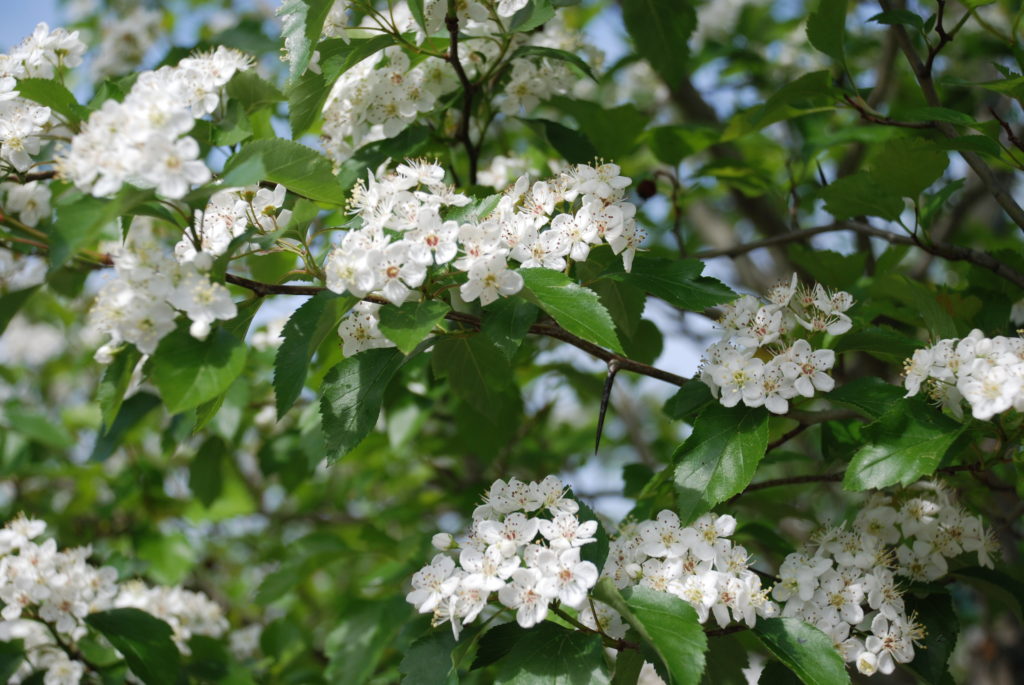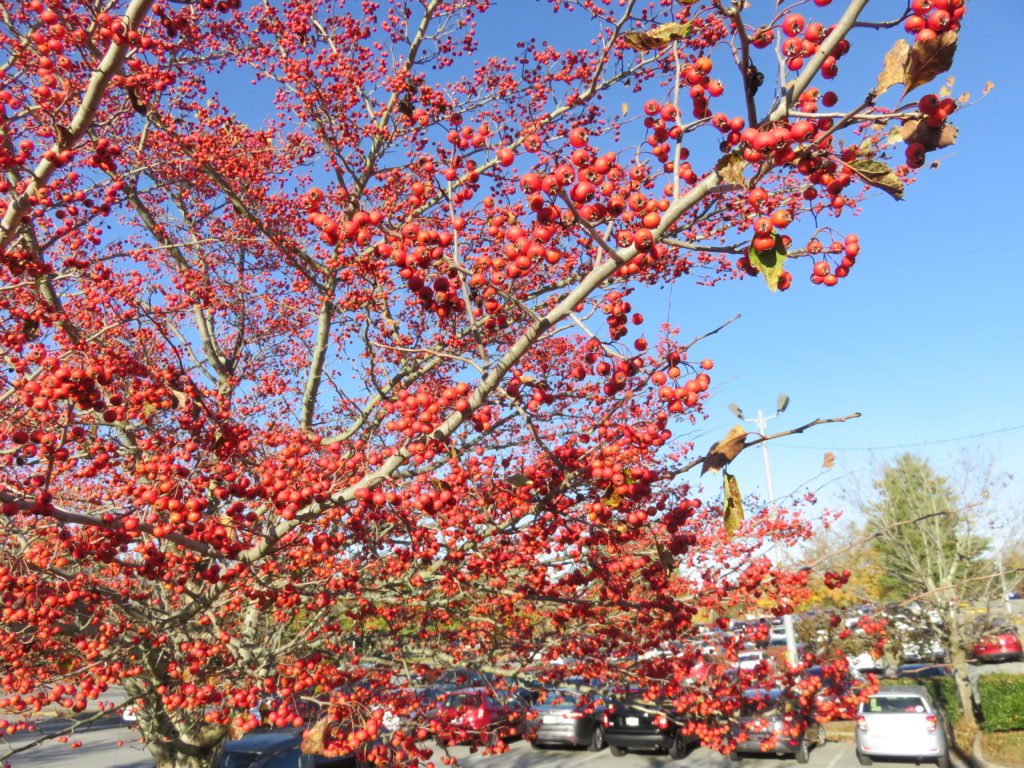The world of hawthorns (Crataegus spp.) includes several outstanding landscape trees that exhibit four-season ornamental interest: 1. spring flowering, 2. disease-free summer foliage, 3. variable fall leaf color, and 4. colorful fruits for wildlife in the fall and winter months. World-wide, hawthorns are native to temperate regions of North America, Europe, Asia, and North Africa, and belong to the Rose family (Rosaceae).
Trees develop a dense canopy of crossing branches with glossy lobed leaves. Most species produce thorns, although some thorn-less forms are available. Hawthorns grow in a wide variety of soils and growing conditions, and make good landscape trees or street tree. Some hawthorns are ideal for planting under power lines and are commonly utilized for tall hedging on large properties, particularly on European estates.

Fragrant white or pink five-petaled flowers resemble apple blossoms. Hawthorn fruits, which look similar to rose hips, are red, orange, yellow, or black. The fruits are produced in fall and persist through winter. The edible fruits (called “pomes”) have various culinary and medicinal qualities, and attract various wildlife, including robins, waxwings, and other songbirds.
Most hawthorns, particularly those that produce thorns, are fairly deer resistant. Hawthorn trees are planted from spring into early fall in full sun and a well-drained soil with a moderately acidic soil between pH 6.0 to 7.5. Water newly planted trees through their first growing season until established.
Once established, Hawthorns are a good choice for curbside, public plantings, and some difficult landscape sites. Water regularly during the first year and during prolonged heat or dry spells. Overwatering and poorly drained soil will lead to foliar and root rot diseases.
Hawthorns are generally light constantfeeders. In early spring, apply a slow-release fertilizers like Osmocote™ or Nutricote™. Mulch with a layer of compost, pine needles, or bark chips to conserve moisture and suppress weeds.
When pruning, use caution to avoid injury from thorns on prickly varieties. Wear heavy gloves, long sleeves, and goggles to protect your eyes. In late winter or early spring, remove damaged, diseased, or crossing branches and shape as needed. Cut back any suckers around the base of the trunk.
Good cultural practices should avoid or lessen disease and pest problems including fire blight, leaf spots, cedar hawthorn rust, apple scab, powdery mildew, and stem cankers. Potential pests include borers, caterpillars, lacebugs, gall mites, aphids, leafminers, and scale.
Three popular hawthorn species/varieties in U.S. landscapes:

Washington hawthorn (C. phaenopyrum) is a southeastern U.S. native, 20-30 feet tall and 20-25 feet wide with an upright spreading habit. Leaves are glossy with pointed lobes and serrated edges. Clusters of pungent white flowers appear in late spring and bright red fruits appear in fall. Sharp thorns make this a good choice to prune into a security hedge (zones 3-9). Fall foliage is brilliant scarlet, orange, and purple.
‘Winter King’ green hawthorn (C. viridis) is a southeastern U.S. native that is a popular landscape and street tree that grows 20-30 feet tall and wide. Fragrant white flowers bloom profusely in mid spring, medium green foliage turns purple-red in fall. Showy red fruits form in fall and persist through most of winter. The silver-gray bark peels off as it ages, revealing its orange inner bark for added winter interest. Branches are nearly thornless, along with disease-resistant foliage. (Zones: 4-7).
Crusader® (syn. ‘Cruzam’) cockspur hawthorn (C. crus-galli var. inermis) is a thornless cultivar. The parent species bears 4 inch long thorns. Crusader is tough as nails, 15-30 feet tall and wide with wide spreading horizontal branching. White spring flowers, green summer foliage, red fruit, silvery bark; variable colored fall foliage of orange, scarlet and purple leaves. Large red fruits stand out against the tree’s spectacular fall foliage. Disease-resistant, very adaptable and tolerant of urban pollution, clay soil, and salt. (Zones:3-7).

 Posted in
Posted in 
